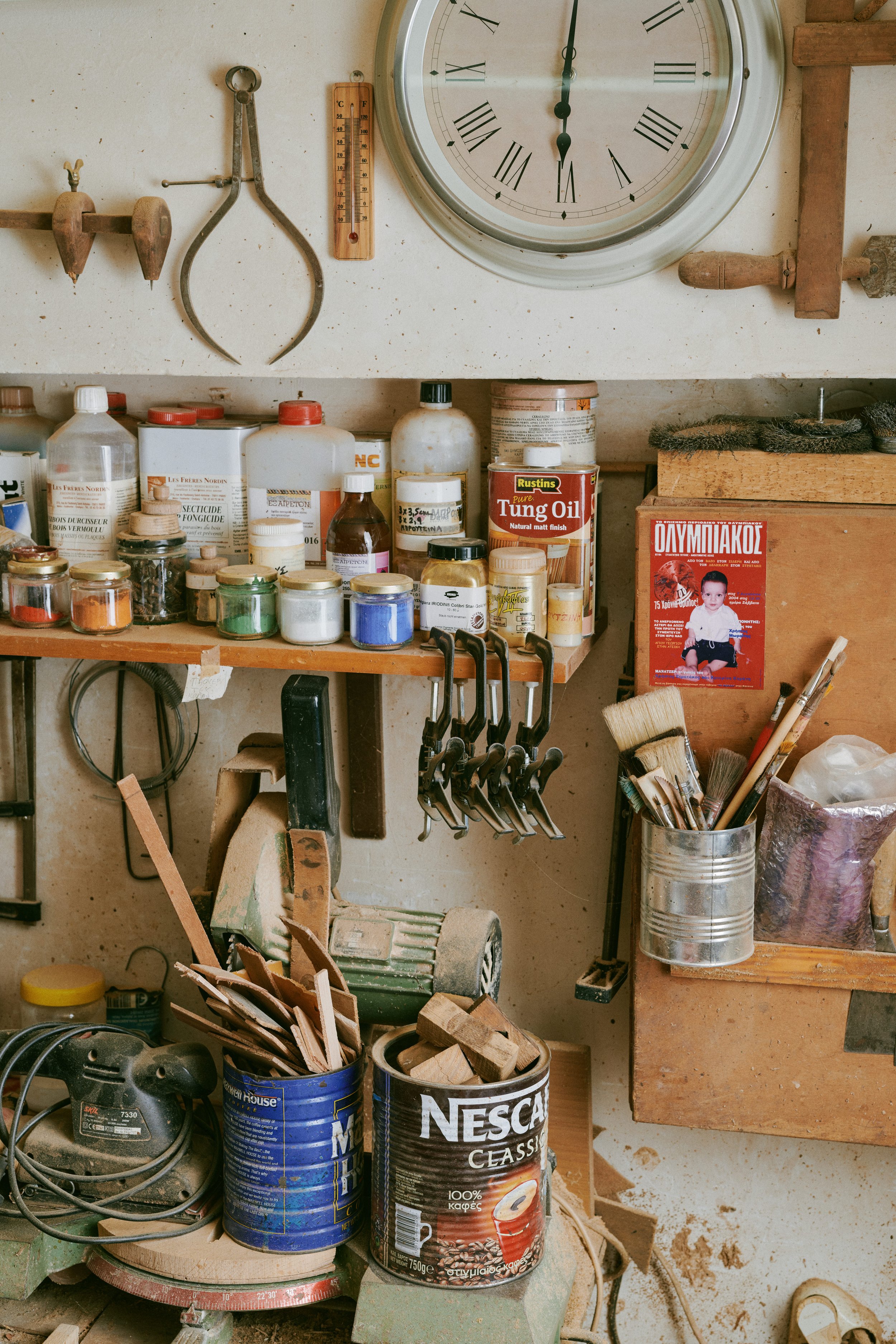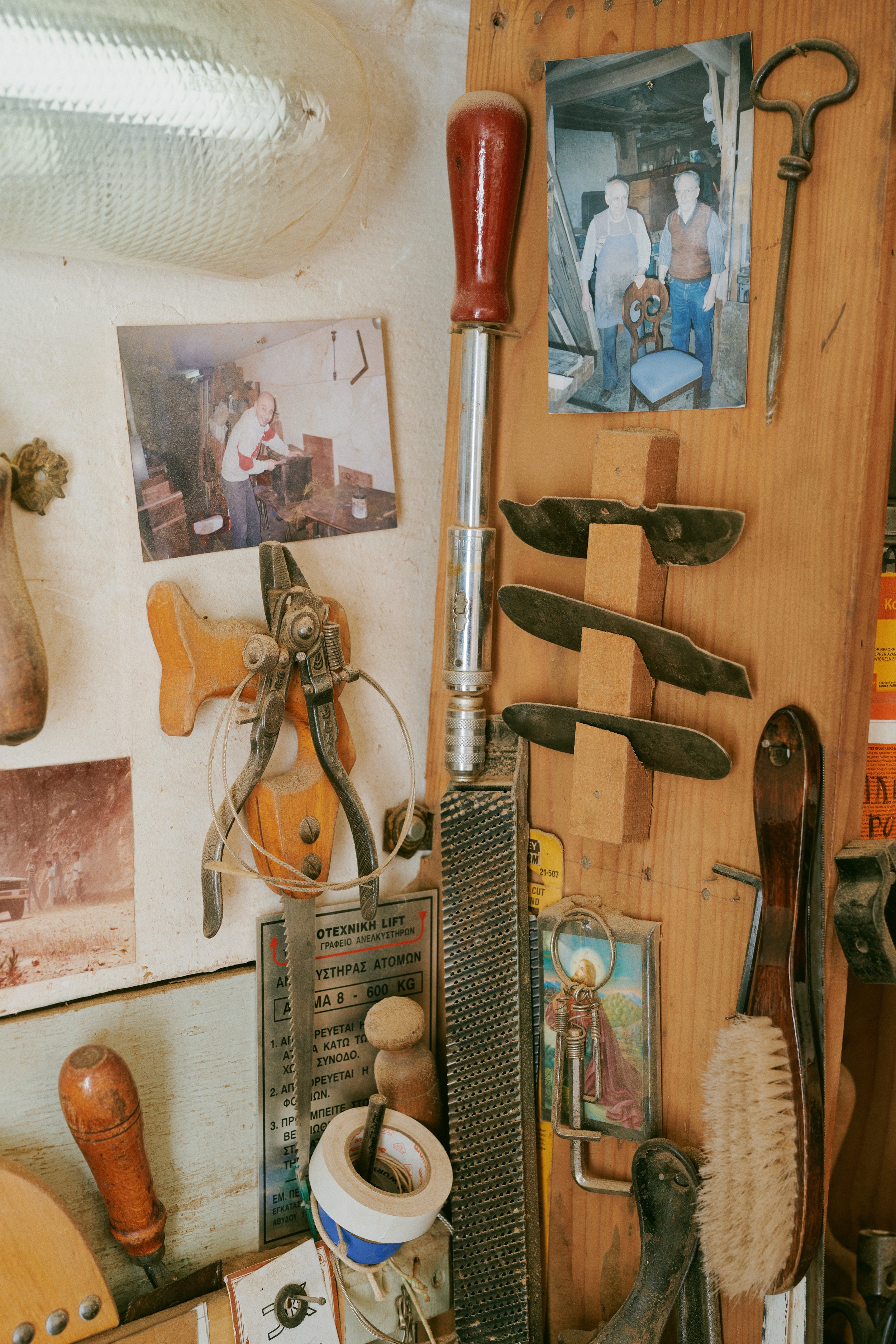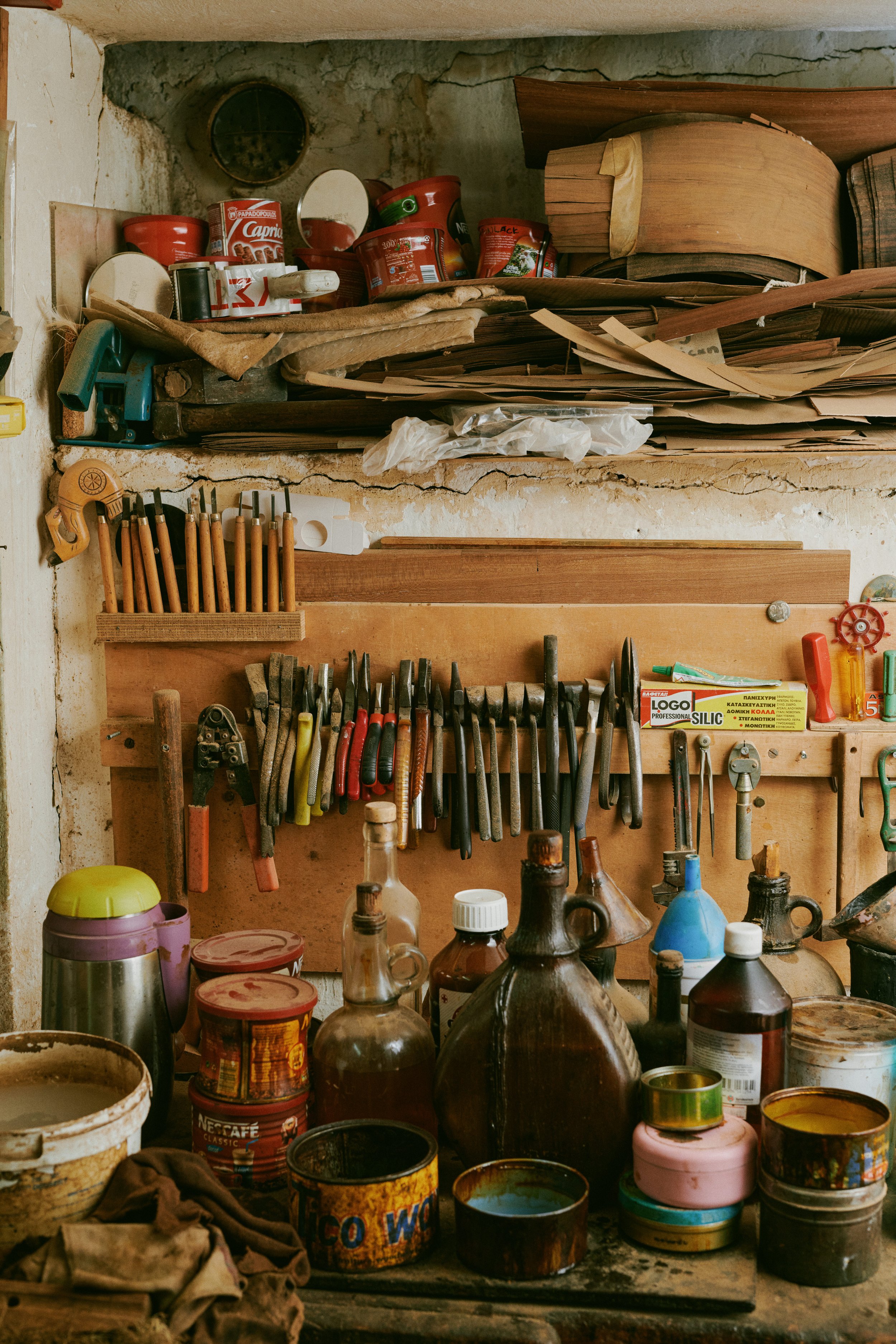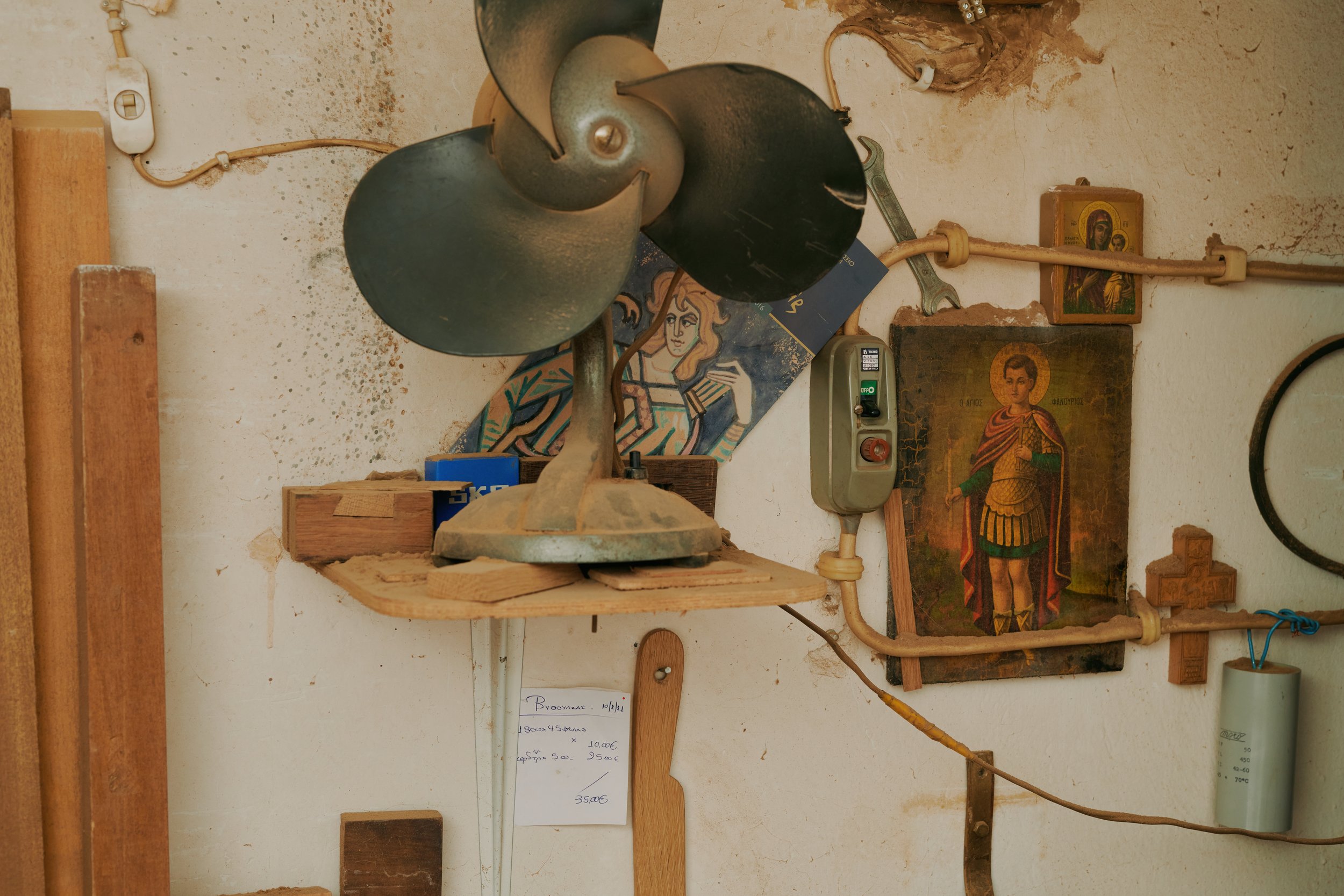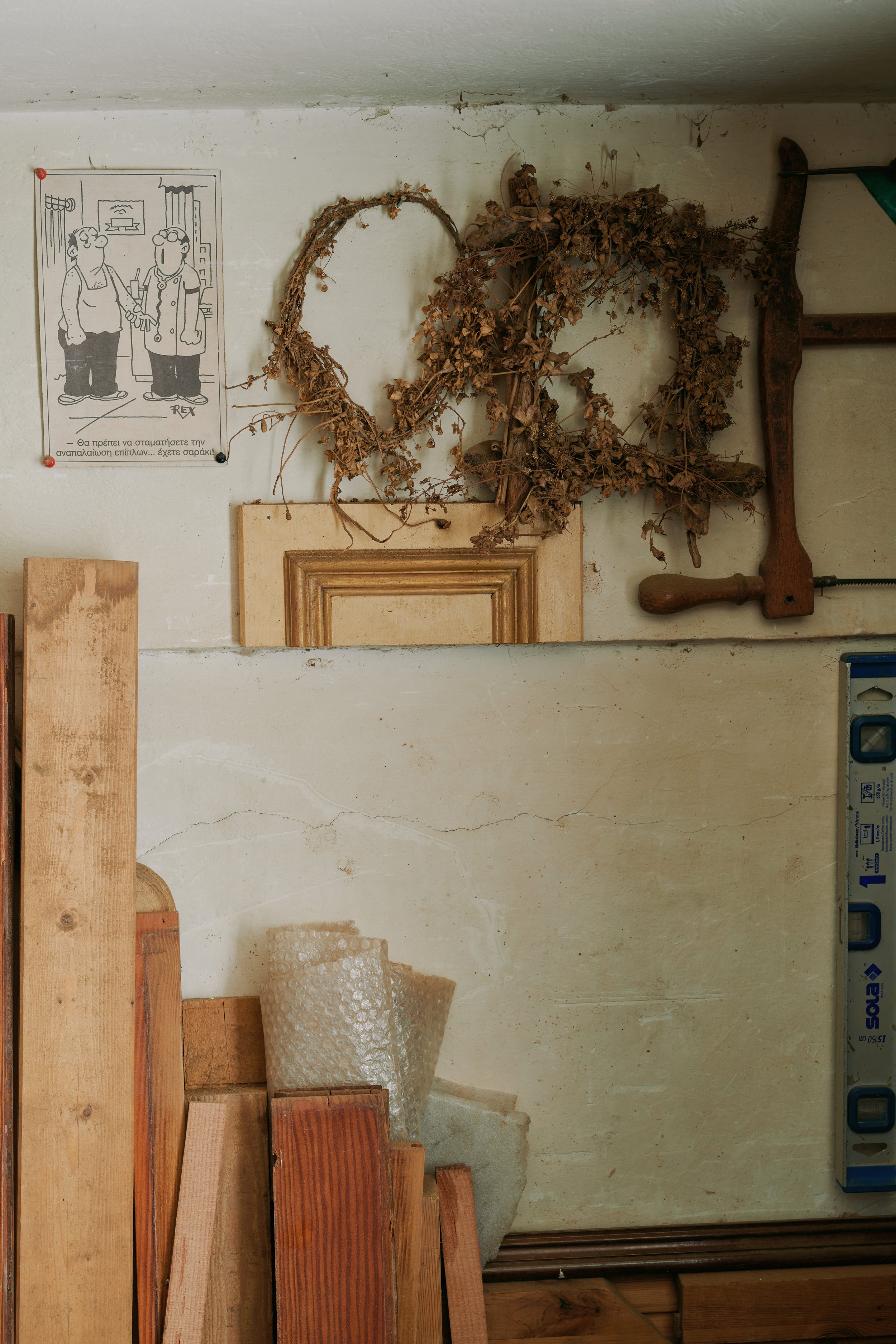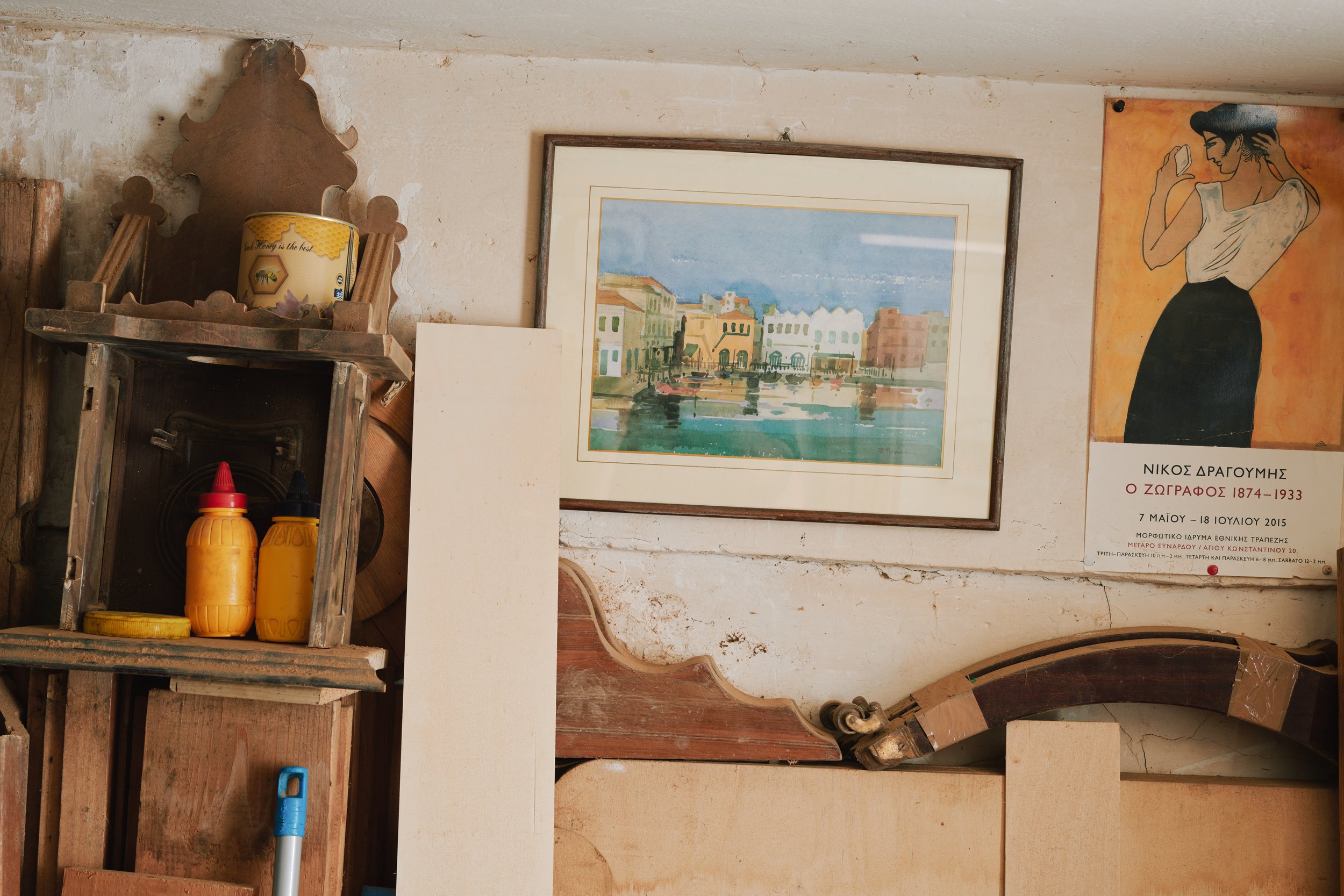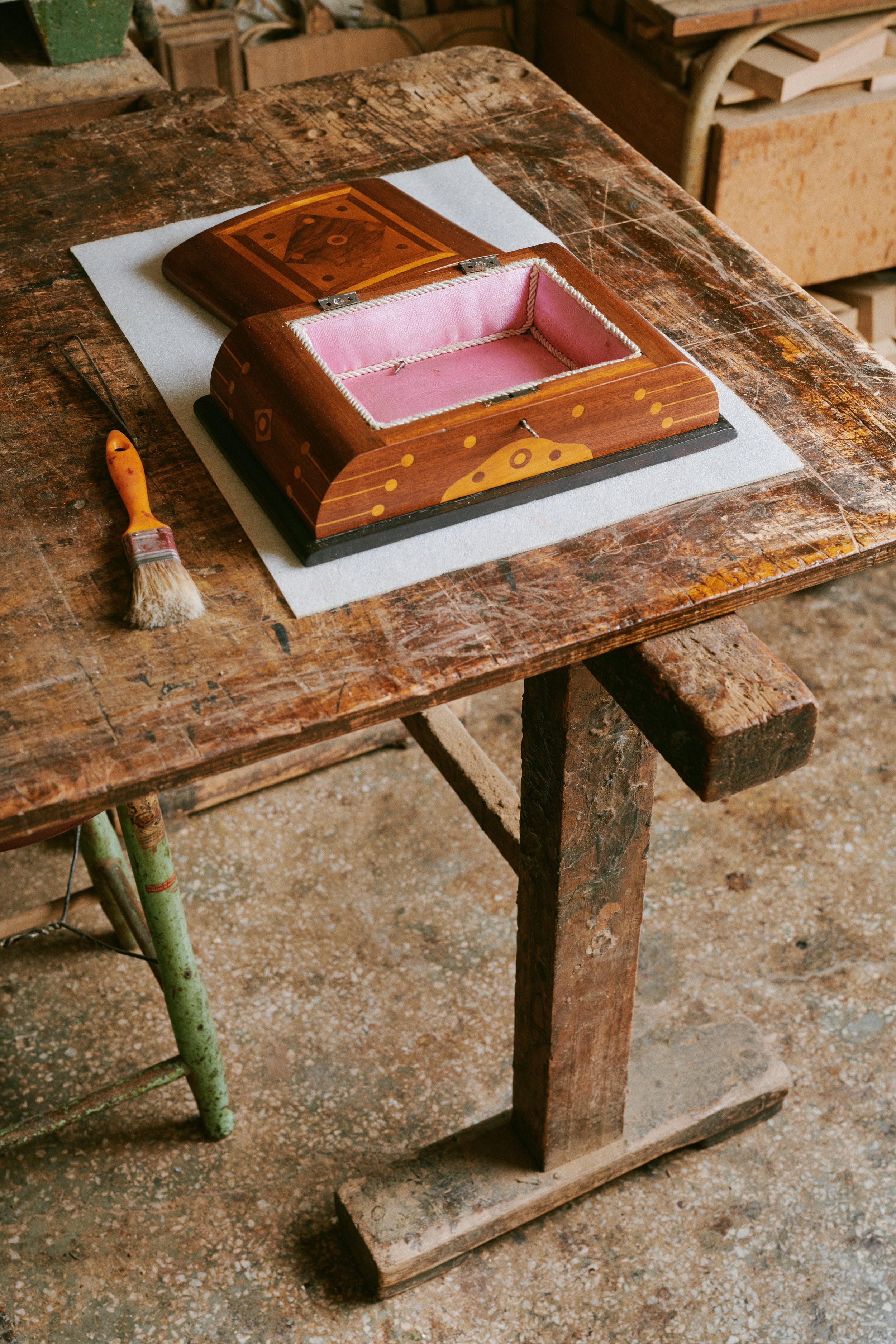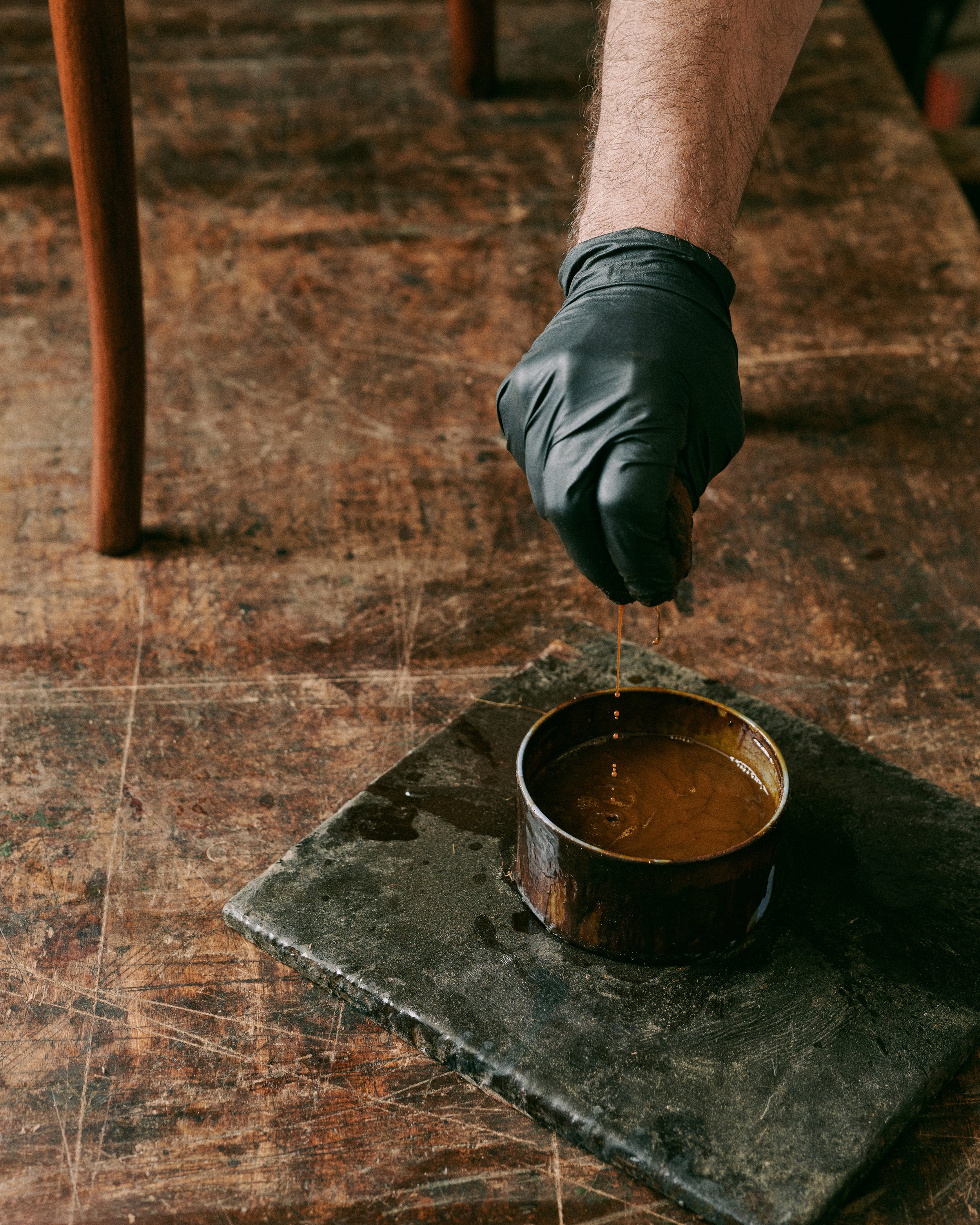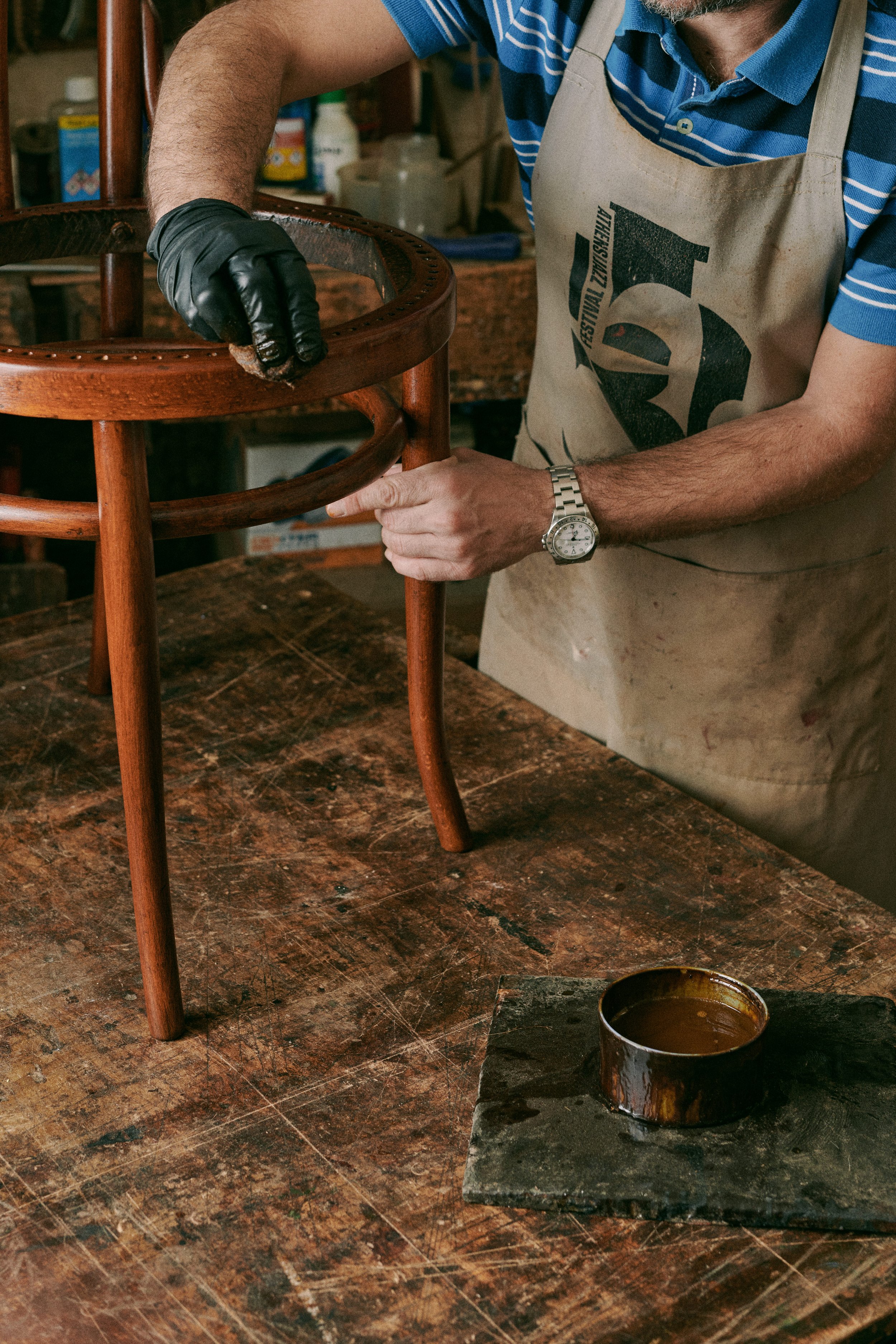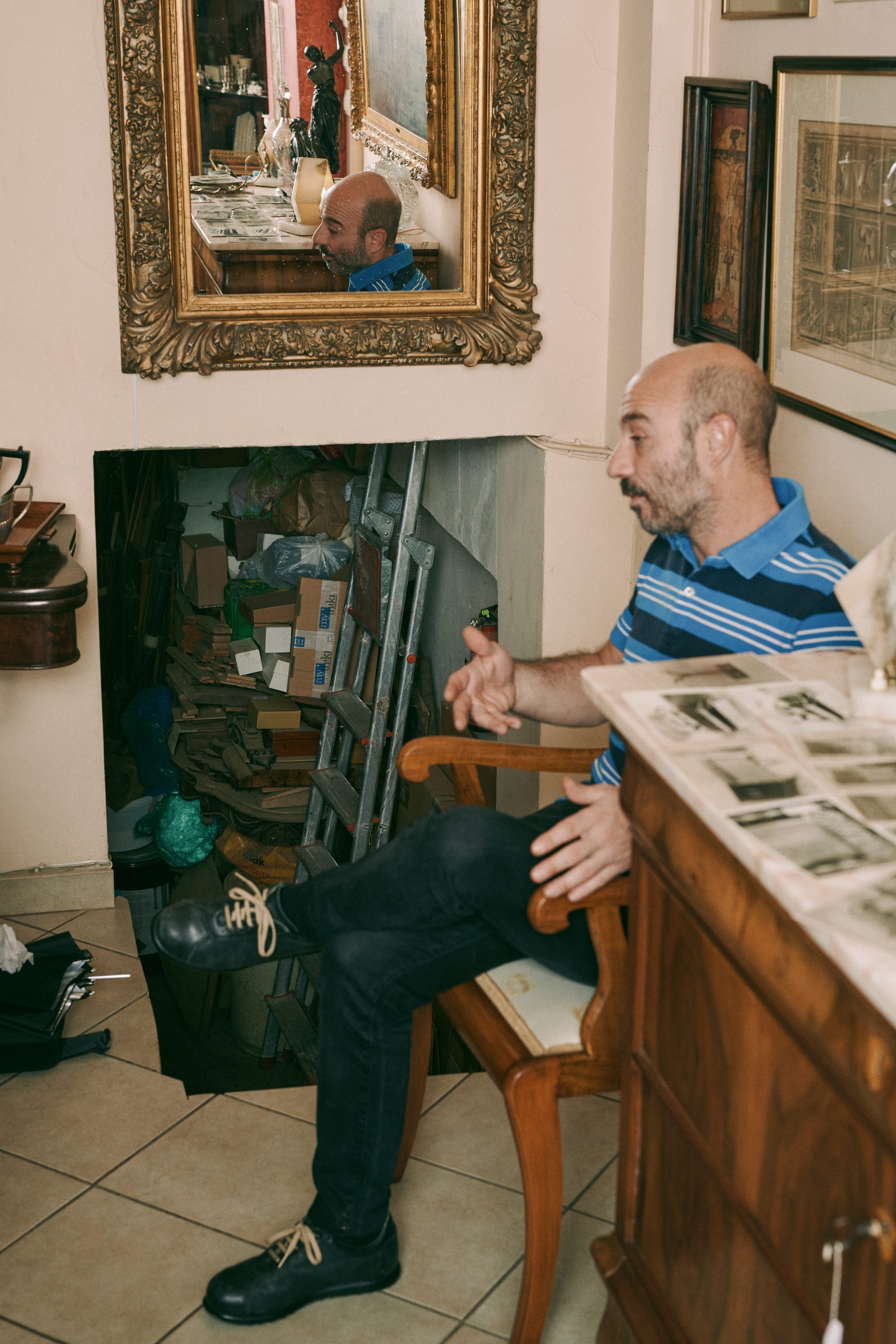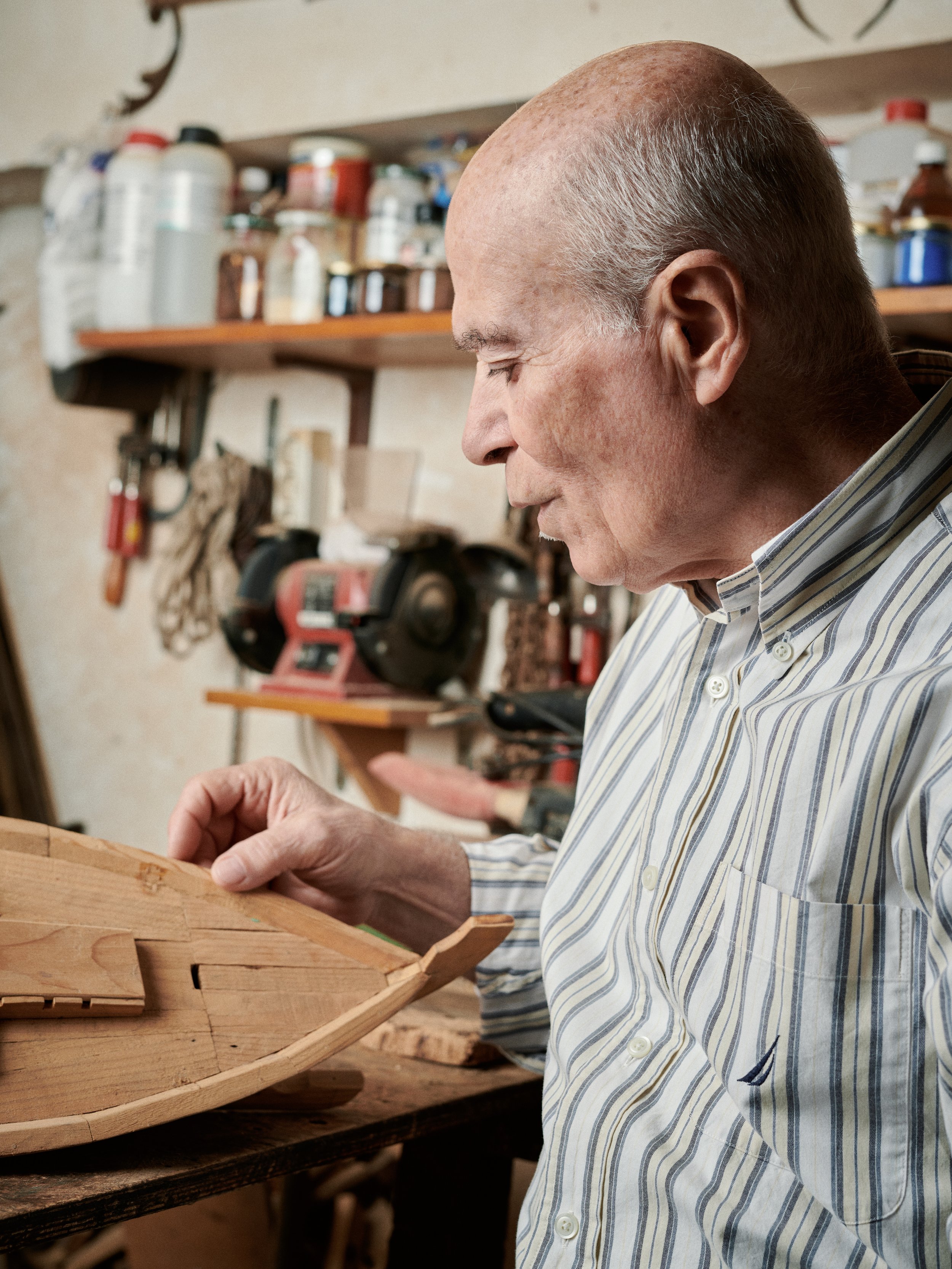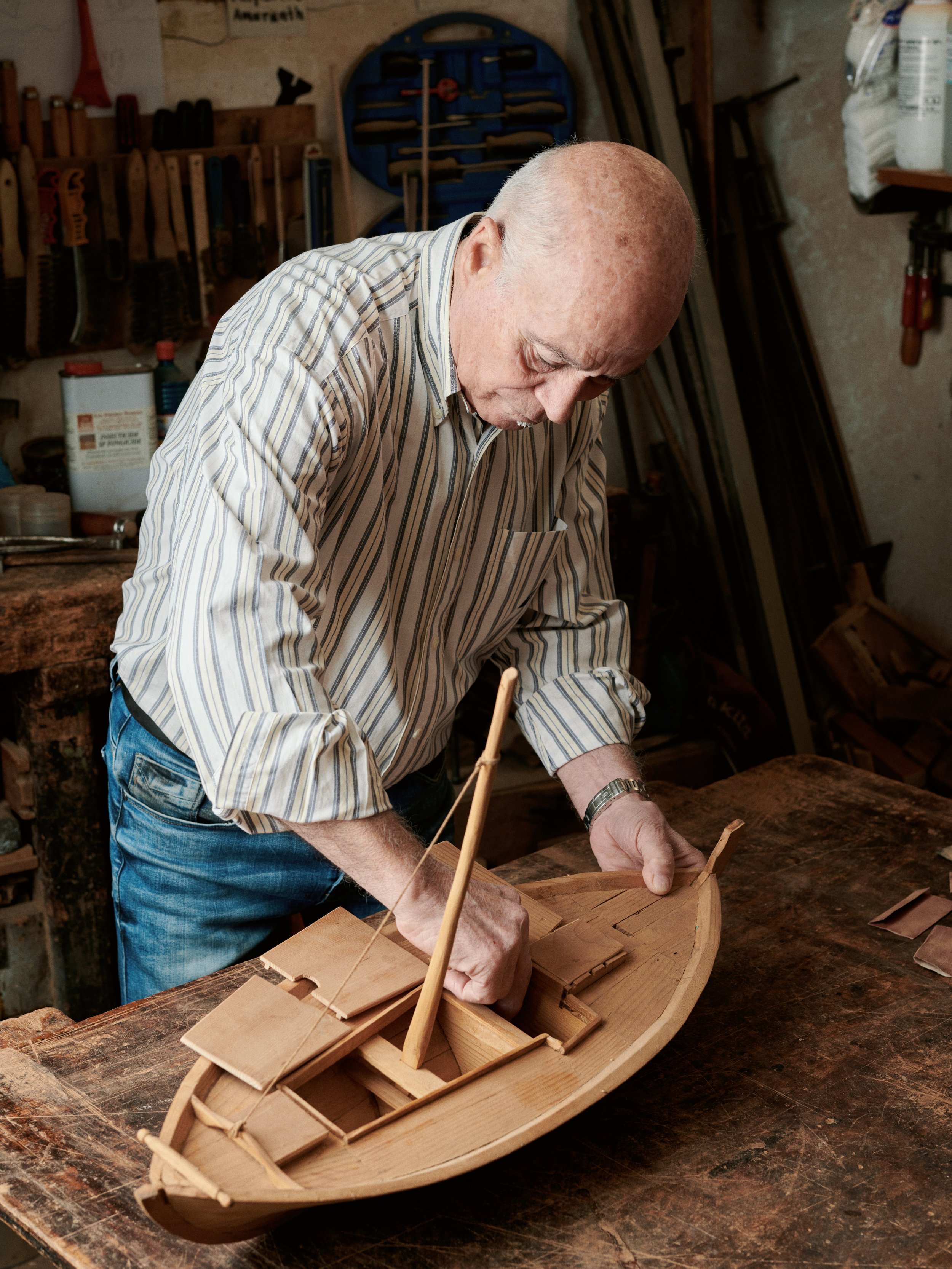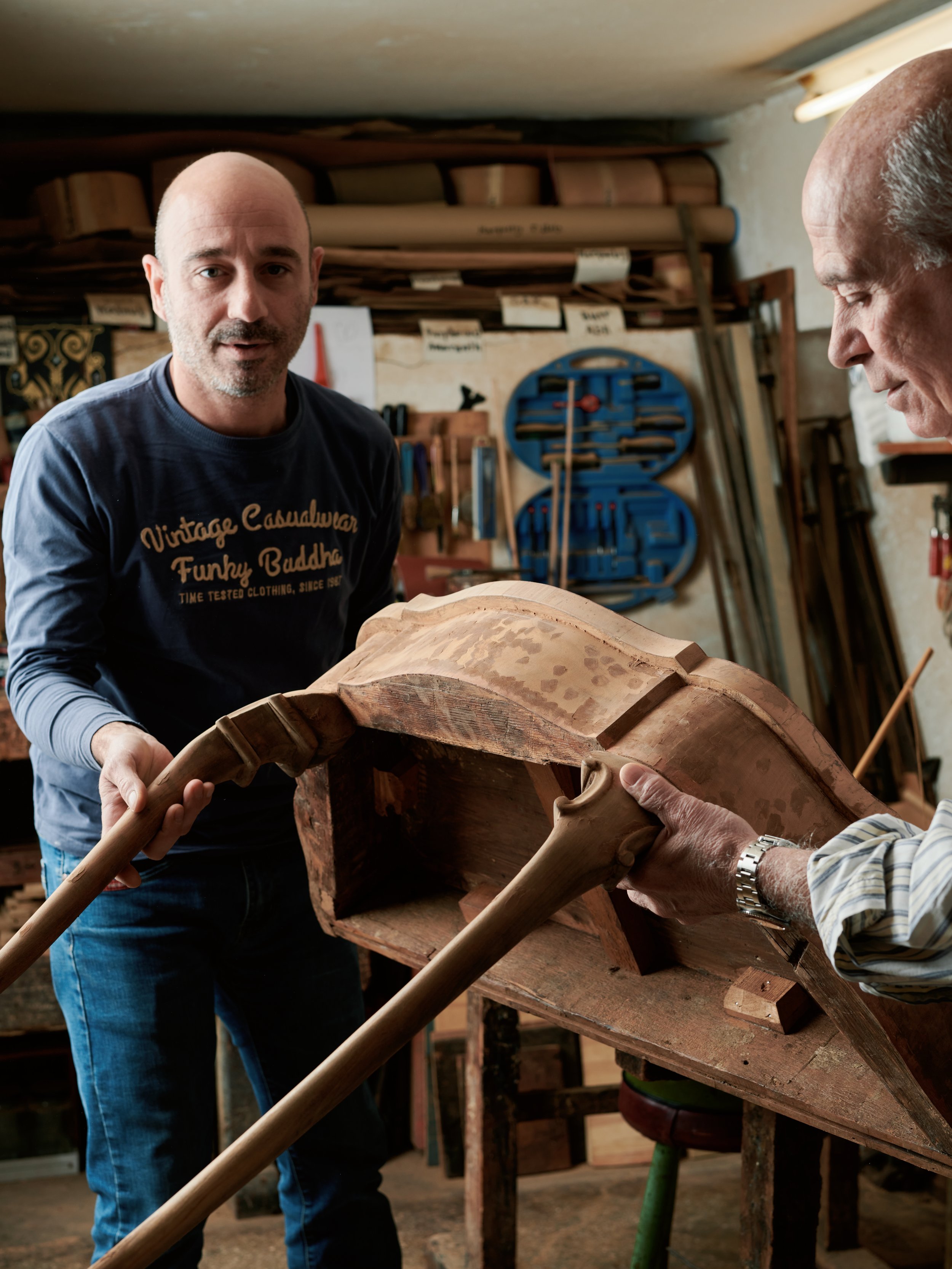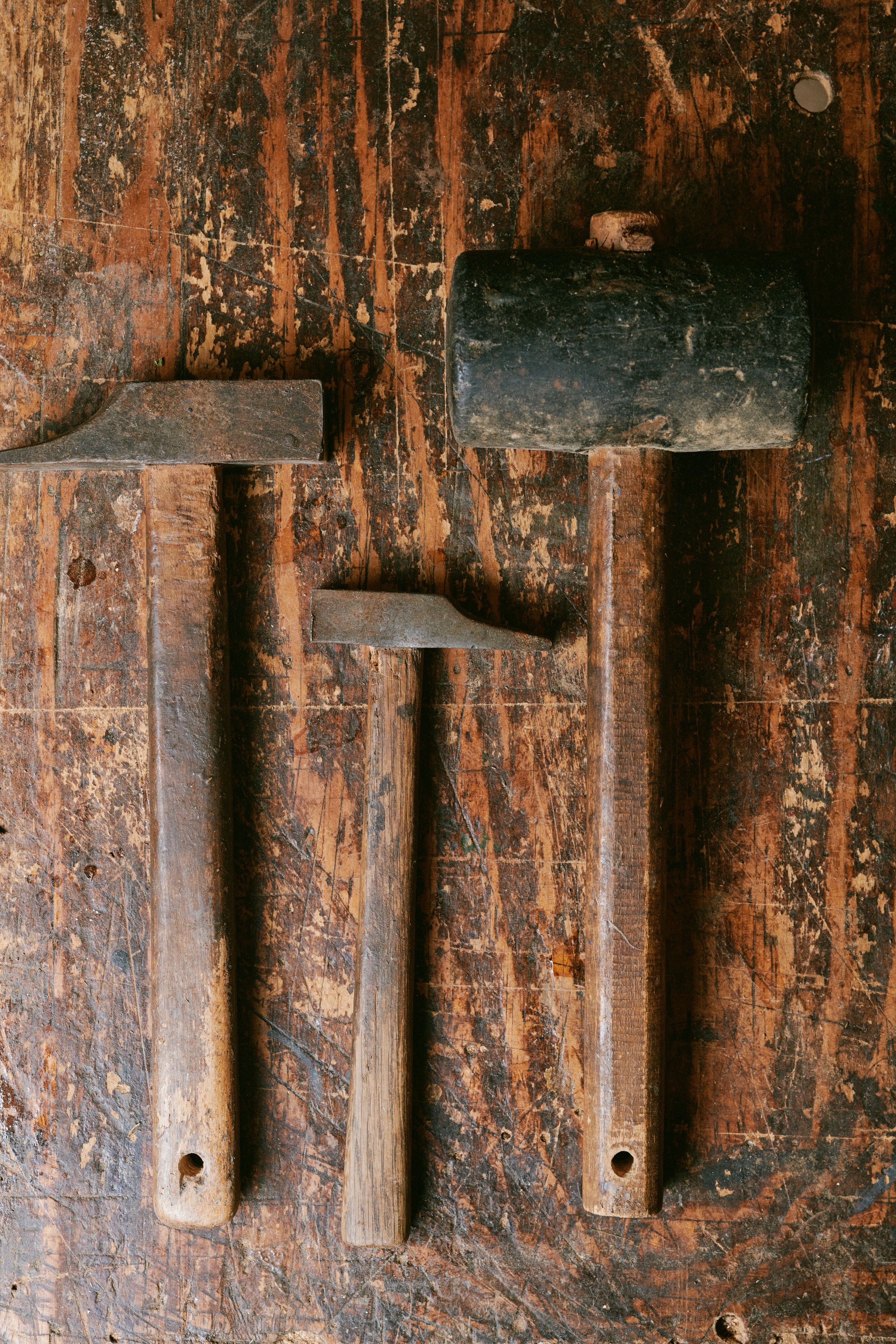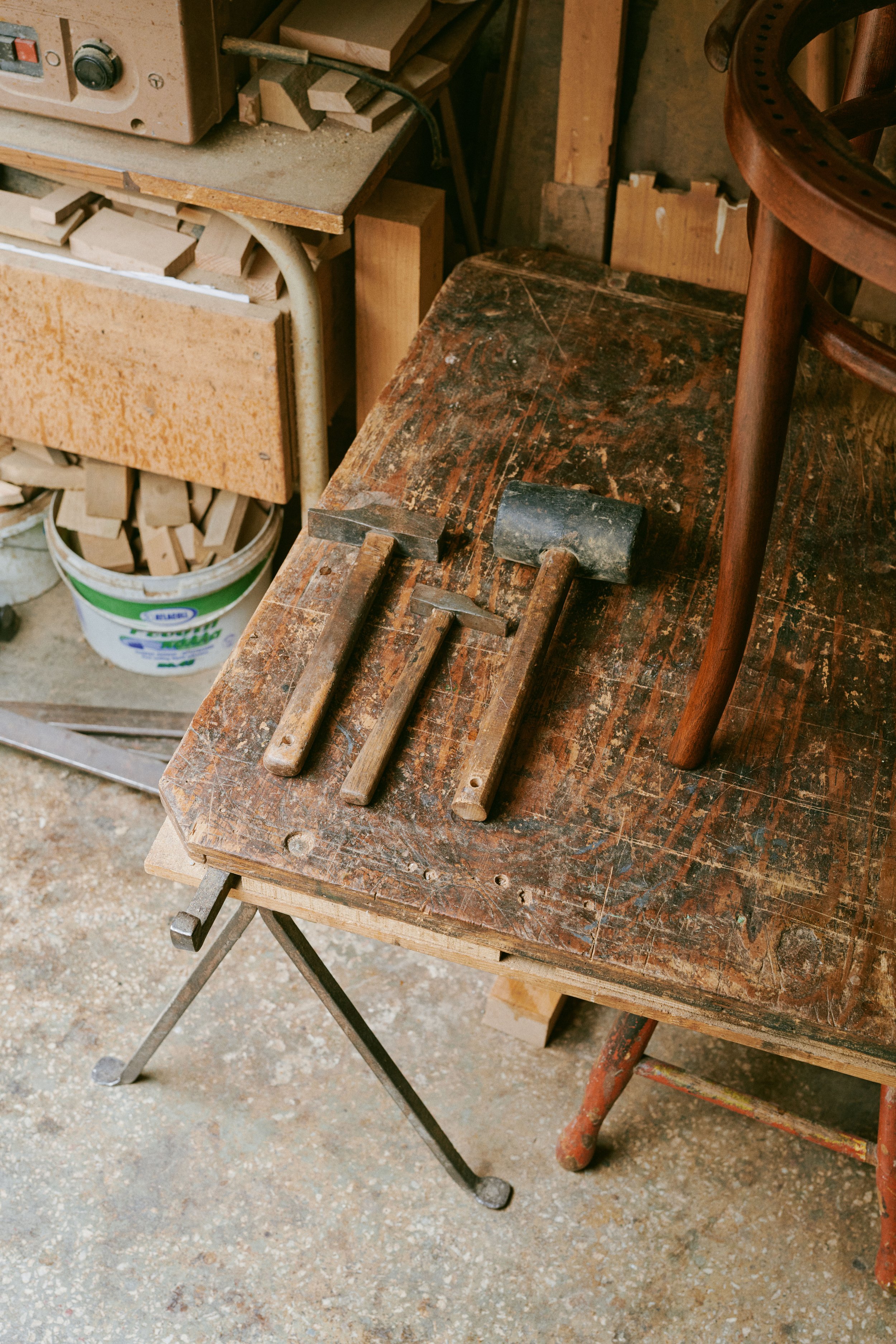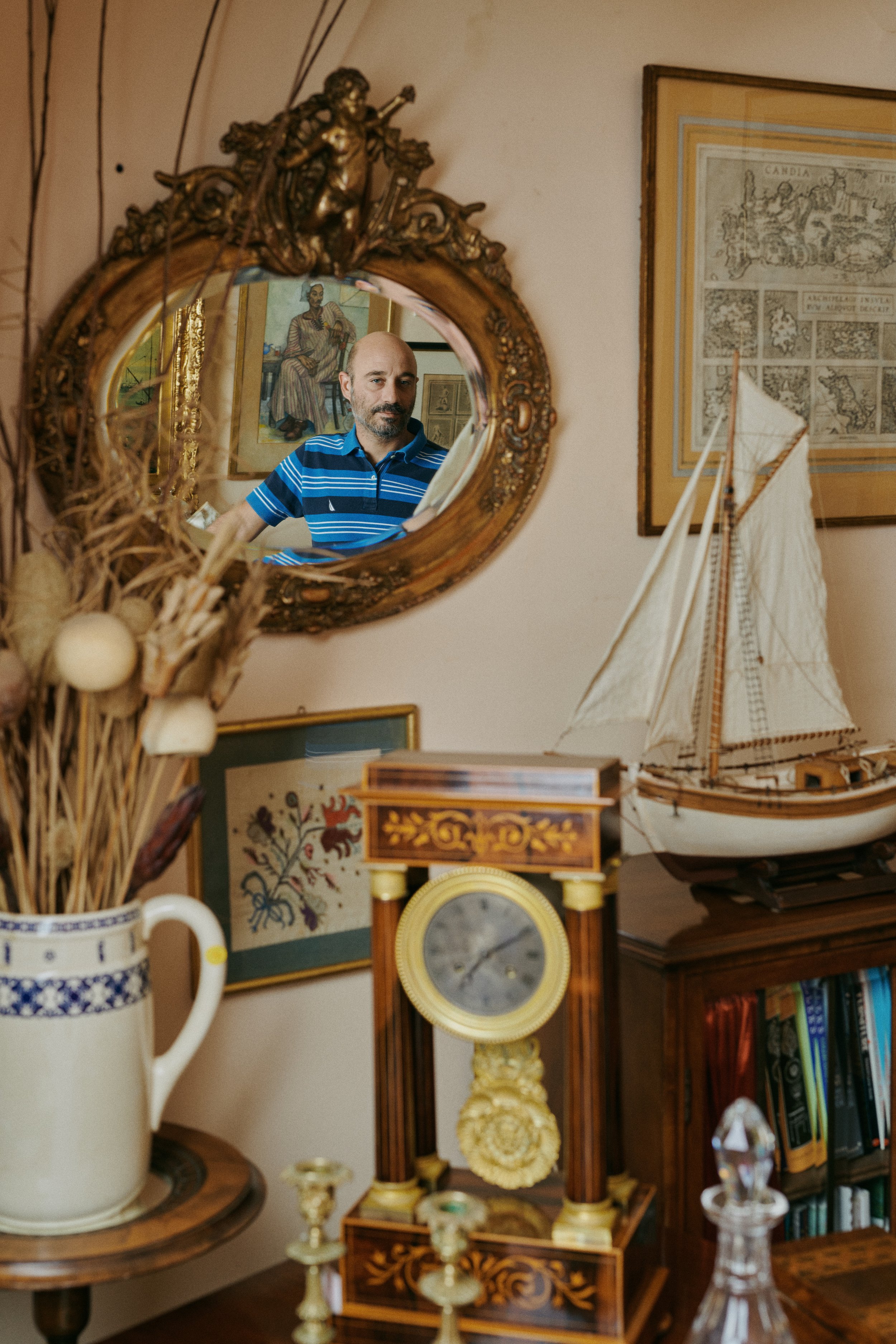THE VITHOULKAS ARCHIVE
There is a conscious thread that ties man to his son, and within the nexus of a craftsman, these traits and intricacies of identity become submerged in the translation of one’s knowledge to the other. Miltiadis II Vithoulkas, a name derived from the Greek word for “red earth” sits with his son, George II Vithoulkas, a name imbued with the earth,“earthworker.” I meet both men in their restoration atelier and antique store on Erechtheiou Street (est. 1987 – Athens), and while savoring sweet liqueur, we unveil their ethos of furniture making and restoration, a tale of makers whose embodiment of their craft evinces the pleasure of giving.
Zakynthos, ~1950, English Bureau Cabinet (Late 18th Century). Image courtesy George I Vithoulkas, Athens Design Forum.
There is a conscious thread that ties man to his son, and within the nexus of a craftsman, these traits and intricacies of identity become submerged in the translation of one’s knowledge to the other. Miltiadis II Vithoulkas, a name derived from the Greek word for “red earth” sits with his son, George II Vithoulkas, a name imbued with the earth,“earthworker.” I meet both men in their restoration atelier and antique store on Erechtheiou Street (est. 1987 – Athens), and while savoring sweet liqueur, we unveil their ethos of furniture making and restoration, a tale of makers whose embodiment of their craft evinces the pleasure of giving.
Athens Design Forum’s 2023-2024 season introduces ANTHROPOS-TOPOS, a universally contingent theme that dissects how humans and places coexist at the proxy of design. Under this theme, ADF ‘In Praxis’ presents the photographic archive of George Vithoulkas I’s furniture restoration projects from the early 1940s-1970s during the craftsman’s transition from Zakynthos to Athens. ADF unearths this archive as a space for re-inscription, pressing forward the evolving idea of design as a threshold tied to human action. An act of preservation, this record instills and recognizes design as an investigative tool into the social upbringing of an era. Pulsating with the drive and commitment of three generations worth of restoration craftsmen, their stories are as titular and symbolic as the items they honorably pursue to save. This previously unseen archive is now digitized with the support of Athens Design Forum.
In an assuring manner, the father’s tone compliments the son’s, and as they speak in rhythmic percussion, one extends the thoughts of the other. George II is a third-generation restoration specialist, his smiling eyes reminiscent of those of his father’s. We speak of romanticism – a philosophy of mind that is evinced through the caretakers of objects. The physical repercussions of ‘fixing’ may be recognized as silent, quiet transformations. Both men yield to the object given to them, absorbing its stature as if they were meeting another human. They dissect the objects’ fragility without prejudice nor ego and the restoration transforms into an act of giving. “Our craft is disappearing... although it is very honorable,” Miltiadis suggests. This honor is grounded in the premise that true knowledge is that of touch, “…touching objects is what gives one eternal and ever-giving knowledge.”
Thisseio, 1965-68, Austrian Biedermeier (1825-30).
______
Miltiadis’ family lineage has ties to the thriving fishermen of Zakynthos’ illustrious port. His father, George I, was a young boy when he began as an apprentice in furniture production and restoration. In 1934, he was photographed with a white bandage over his head in front of his teacher’s atelier; as he cradles a wooden plane tool, the bandage may appear in the guise of a sailor’s hat. A closer look, however, reveals an incident caused while ‘playing’ within the atelier, as specified in the interview by Miltiadis. George I went on to establish one of the most respected furniture-making workshops on the island.
Zakynthos, 1934. George (I) Vithoulkas is seen with a head bandage after an incident as an apprentice – in his arms, he cradles a wooden plane tool used for edging. A year later, he would open his own workshop.
Zakynthos, 1934; notations with names of featured craftsmen on the back of the previous image, resulting in the only surviving image of George Vithoulkas as an apprentice.
Zakynthos’ thriving economy of the early 20th century translated into grandiose homes that were host to diverse families, amongst them wealthy Italians within the shipping industry. The furniture makers drew on an eclectic aesthetic that fused Italian, Spanish, island vernacular, and English prototypes. A new palimpsest of artisanal languages formed where Italian Baroque merged with the iconographic customs of the island. Migration also played a role in the craftsman’s ecosystem, as technicians came from regions such as Epirus, including silversmiths and wood carvers. The blossoming of the artistic fields was not only limited to the oeuvre of furniture and extended to a diverse application of the arts.
The archival images invite us to bear witness to a young George Vithoulkas I. He is seen wearing jean trousers and a white shirt, the camera becoming a source of agency that was meant to inform internal discussions and not intended for the public eye. With varied scenic elements, we see the transition from Zakynthos to an industrialized Thisseio, Greece – a district popularized by a large, imposing hat factory.
George I is visible in the Late 18th-Century English Cabinet’s reflection, at the workshop within Thisseio, 1955-60.
I. Workshop in Thisseio, 1955-60, Seen in the doorway, the owners: (L) Vithoulkas, George and (R) Grassos, Dionysios (from 1954-2000). Both were specialized in different fields surrounding restoration, having migrated to Athens after the disaster in Zakynthos. Vithoulkas held a private workshop on the island from 1935-54. A young unidentified boy is seen perched atop a folding table. II. Workshop in Thisseio, Unknown man in a doorway; perhaps a client. French Louis XV Bureau.
The following interview excerpts have been translated into English.
On romanticism
George Vithoulkas: I believe romanticism is what makes you feel sensitivity for the labor of the other, for the emotions one gives to the object. Even if it is an artwork, a drawing...
Miltiadis Vithoulkas: Or anything else...
George: Or an object of furniture that may be a prototype of the era, although the emotion of the artisan always shows in the final product he gives.
Miltiadis: I say...we make a restoration. We must love the object before giving it to the customer...if you do not love the object you cannot betroth it to another!
George: We give our time to details...as many times, we work on the smallest detail that may take two hours although we are sure no eye may see it, although (laughing) even our eye may not see it after one year. But....the importance of it is paramount.
Zakynthos, 1940-45, Small coffee tables based on English prototypes, produced on the Ionian islands. Fitted with marble tops. Late 19th – Early 20th Century.
Zakynthos, 1945-50, English Coffee Table with lion head handles and lion feet fittings (19th Century).
On their partnership and decision-making
George: Of course, of course – although we fight in the good sense.
Miltiadis: “Not this way, the other way”..... On the same object, we must argue although we also collaborate. We cannot collaborate without the other's expertise and knowledge...it is a giving act. Many times, we see each other's eyes and know what is exactly needed from one’s gaze to the other.
On assessment
George: One needs caution when assessing an antique object – if it is completed by folk craftsmen, one must never intervene in the character of the item or the foundation.
Katerina Papanikolopoulos: You do not place your own artisanal craft ‘stamp’?
George: You do not place your own character through restoration, it is not an act of creation...there is a specific aim. To stop the decay (“φθορά”), that is the philosophy we use when faced with a folk object such as a “κασέλα” (chest)... you need caution as it is easy to transgress the line of involvement that may degrade the original demeanor and spirit of the piece. Even if in one folk “κασέλα” you may believe there is an error in the ornamentation, it is what has been done and what should stay. If your personal opinion differs, it is not your choice. Your duty is to withstand and protect the piece from decay. It is necessary to know what is due to decay and age and what is due to the construction of the artifact....it is the knowledge that is acquired through time, having seen the aging of objects by the spoonful, and the labor spent deciphering objects.
A craftsman in the past may have unintentionally destroyed part of the foundation of the artifact where it is necessary to intervene...usually internally.... not on the outside, and it must be done with respect, utilizing same-age restoration materials and old screws. It is difficult to find in Athens the necessary restoration appendages... small, lithe screws to be used in delicate boxes and the like. All these bring difficulties to restoration as it is difficult to find bronze artisans, wood sculptors, and original materials. One must always be cautious... never to place a new screw on an old artifact. When viewing these bad alterations, it ruins the experience and emotional output of the artifact.
I. Thisseio, ~1955, Italian Folding Arm Chair Without Tapestry (Early 19th Century). II. Thisseio, , ~1955, Austrian Biedermeier Table (1825-30).
I. Thisseio, Late 60’s, Italian Chair with Caned Back – Early 19th Century II. Thisseio, 1960-65, Spanish Carved Baroque Table with Iron Fittings - 18th Century.
We inherited a large stock of bronze decorative elements that are useful for restoration, to allow us to be cautious. If you have a piece with seven handles and one is missing or broken, 1 in 10 times I can find the exact piece through the existing stock (that is renewed throughout time...especially through travels, sourcing old keys, elephant tooth, tortoiseshell, etc).
On specialization and the rise of George I
George: In the period of my grandfather on Zakynthos, the workshops were populated with specialized craftsmen: some made the marquetry, cut the blossoms and flowers, others placed them, others prepared the luster, others made the frame and foundation of the furniture, others made the wood sculpting...and the bronze men and metalsmiths were independent yet codependent. Over time, these workshops became smaller and the specialties disappeared. Our family left in 1953 as both our house and the workshop were burned and destroyed by the great Ionian Earthquake. They came to Athens where they had relatives and two years later, my grandfather opened his first store in Athens in Thisseio near Poulopoulou. He worked there until he was eight-five years old when he closed the workshop.
On the client-craftsman relationship
George: George I quickly developed a respected reputation, and his clients included figures such as Yannis Tsarouchis, Melina Mercouri, and Alexander Iolas. My grandfather had strong ethics and was a good person, and these characteristics are also reflected in the manners of my father. A sweet person who was beloved. Iolas would come and stay for hours in the workshop...and honored my grandfather with many beautiful gifts.
On the second generation – Miltiadis
George: He started at a very young age, working under a different master craftsman other than his father. There is a saying if you are in the same workshop of your father, you will always be the child and not learn the trade in the same way. He went to two different workshops before opening his own shop, so, he became independent although they continued to collaborate. Since 1987, we are here at Erechthiou Street. My grandfather began very small, as he learned marquetry, shipbuilding construction...he loved small details, as we say, ‘for prisoners’*. He loved ships and the sea, building and producing such items. He learned on his own, as his father did not know these trades. Inlay decor with floral appendages, animals…
Zakynthos, 1940-45, Spanish Baroque Secretary Desk (17th Century).
He was passionate, as I am now. No one got involved out of duty or out of need....my father actually pushed me not to do it...and many times he told me of the difficulties of the trade. He did not idealize the trade, rather I had known from a young age, 12-14 years old, that I wanted to pursue this craft – restoration...and antiques! The shop was originally more concise – each generation developed it a bit further. My father was different, so was my grandfather, and myself. Our knowledge also evolved – I can say my father is stronger as a technician than my grandfather.
*Prisons – meaning the period when Greek prisons were saturated with wooden craft production of the most meticulous scale, primarily in Corfu, Kerkyra during the 1960’s.
On the ethic of work
Miltiadis: My father worked until he was 85 years old, and not for the money – he solely loved it. His work advice was not always specific. Instead, it consists mostly of notes that to the public may seem mere details, although when you are working...that is when you learn...that is the knowledge that is subconsciously inherited. Sometimes, we must theoretically learn many lessons, but it comes only through discipline and the payment is laborious time – the more items you touch, the more you learn.
On lustre – French polish ‘Yomalaka with white alcohol’
George: It is produced in India, from a fig-like tree with heavy secretions that then produces this material. It is sold as-is, mirroring ochre fish scales. There are several kinds: blonde, brown-black, depending on the material production each year. French-polish (or in Greek,‘Yomalaka’) is added to white alcohol...as you add more it becomes lighter. It is a form of resin... people used it as glue. You apply the luster in a circular motion to enter the pores...it fills the pores of wood and never seals it allowing the wood to breathe from inside to the outside, until you create a final layer that is a shine-infused surface. Varnish does the complete opposite – it falls atop the pore of the wood and never penetrates the interior. It is also possible to create a satin or matte finish with this luster polish, our specialty.
French polish is resistant to time, only in need of a simple dusting, but it is sensitive to humidity and wetness (such as a wet cloth). The enemy of all varnish is humidity and wetness. Newly developed varnishes, although they are more resistant to humidity, they give a sense of plasticity to furniture.
On Nicoletta
Miltiadis: Nicoletta Vithoulkas, my wife, would source the majority of antiques.
Katerina: When you first met her....did she love antiques?
Miltiadis: Of course, of course... I told her, do you love antiques? And she responded... yes, I do! And I said...then we make quite a pair! (sweet laughter)
Thisseio, 1960-65, I. Austrian Biedermeier Chair, Walnut Wood (1825) II. English Regency Sofa Table (Early 19th Century).
Zakynthos, 1945-50, Spanish Carved Baroque Chest (18th Century).
__________
With extended gratitude to the Vithoulkas family
Images copyright Athens Design Forum, Courtesy of the Vithoulkas Family Archives
Digitization of Photography by Petros Toufexis
LEGAL NOTICE
No part of this website may be reproduced or transmitted in any form or by any means, electronic, mechanical, photocopying, recording, or otherwise, without prior written permission of Athens Design Forum.
Requests for reproductions or permissions to publish should be directed to info@athensdesignforum.com














